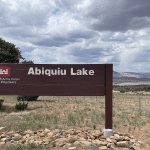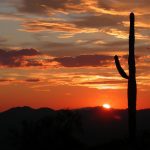- Groundwater depletion in Arizona surpasses Lake Mead’s full capacity.
- Managed aquifer recharge has helped stabilize levels in urban areas.
- Future cuts to Colorado River supplies could reignite groundwater losses.
Thursday, April 3, 2025 — Arizona is grappling with profound water loss, as a new peer-reviewed study reveals the state’s groundwater depletion in the Lower Colorado River Basin has exceeded the full capacity of Lake Mead by 40%. The findings, published March 18, 2025, in Communications Earth & Environment , offer a comprehensive look at the region’s water challenges and underscore the urgency of rethinking water management in the face of drought and overuse.
, offer a comprehensive look at the region’s water challenges and underscore the urgency of rethinking water management in the face of drought and overuse.
Major Groundwater Losses.
Researchers, including lead author Bridget R. Scanlon of the University of Texas at Austin, found that from April 2002 to June 2024, total water storage in the Lower Basin dropped by 45 cubic kilometers—about 80% of the basin-wide loss. Of that, about 60% is attributed to groundwater depletion.
“The large depletion in the LCRB exceeds the capacity of Lake Mead (~32 km³) by ~40%, the largest reservoir in the US,” the study states .
.
Much of the groundwater loss is centered in southeastern Arizona, particularly the Willcox and San Simon basins, which saw cumulative groundwater level drops of up to 11 meters and land subsidence of up to 1.2 meters since 2000.
Recharge Successes in Central Arizona.
Not all areas suffered the same fate. The study notes that Central Arizona’s Active Management Areas—Phoenix, Pinal, and Tucson—have experienced an average groundwater level rise of about 3 meters since 2000, largely due to managed aquifer recharge (MAR) using imported Colorado River water.
“Managed aquifer recharge and incidental recharge from imported surface-water irrigation led to a 3-m average groundwater-level rise in Central Arizona Active Management Areas (2000–2023),” the researchers write .
.
This success stems from decades of investment in underground storage facilities and groundwater savings programs. These efforts have banked roughly 25 km³ of water since 1989—five times the region’s annual water demand.
The Looming Threat of Reduced River Deliveries.
However, the study cautions that future shortages on the Colorado River could threaten these gains. Arizona receives 2.8 million acre-feet of Colorado River water annually, but deliveries have already been curtailed in recent years due to declared shortages. Further cuts, particularly after 2026 when current management guidelines expire, could reduce aquifer recharge and force renewed groundwater pumping.
“Projected declines in Colorado River water transfers to Central Arizona could lead to further depletion and subsidence,” the study warns.
These concerns are compounded by the state’s “pump and replenish” system, where water users are allowed to extract groundwater provided they later recharge it elsewhere—an arrangement that can fail when supplies dwindle.
Agriculture and Groundwater Demand.
Irrigation remains the largest water user in the Lower Basin, accounting for 77% of total withdrawals. Groundwater provides half of this supply, and efficiency remains low, with 70% of irrigation still relying on flood methods as of 2015. According to the study, some agricultural areas continue to expand in regions with no surface water access, raising questions about sustainability.
The study also modeled future groundwater use, projecting steep declines of up to 100 meters in areas like the Pinal AMA by 2121. It remains uncertain whether agricultural operations can afford the rising energy costs associated with deeper pumping or whether infrastructure can withstand increasing land subsidence.
also modeled future groundwater use, projecting steep declines of up to 100 meters in areas like the Pinal AMA by 2121. It remains uncertain whether agricultural operations can afford the rising energy costs associated with deeper pumping or whether infrastructure can withstand increasing land subsidence.
A Call for Integrated Management.
With groundwater losses outpacing replenishment in key areas and river allocations under renegotiation, the authors urge more comprehensive management . The study emphasizes understanding “system dynamics related to climate and human drivers” to craft sustainable policies.
. The study emphasizes understanding “system dynamics related to climate and human drivers” to craft sustainable policies.
Citation.
Scanlon, B.R., Pool, D.R., Rateb, A. et al. Multidecadal drought impacts on the Lower Colorado Basin with implications for future management. Commun Earth Environ 6, 214 (2025). https://doi.org/10.1038/s43247-025-02149-9
Image Licensed from Envato.





Leave a Reply